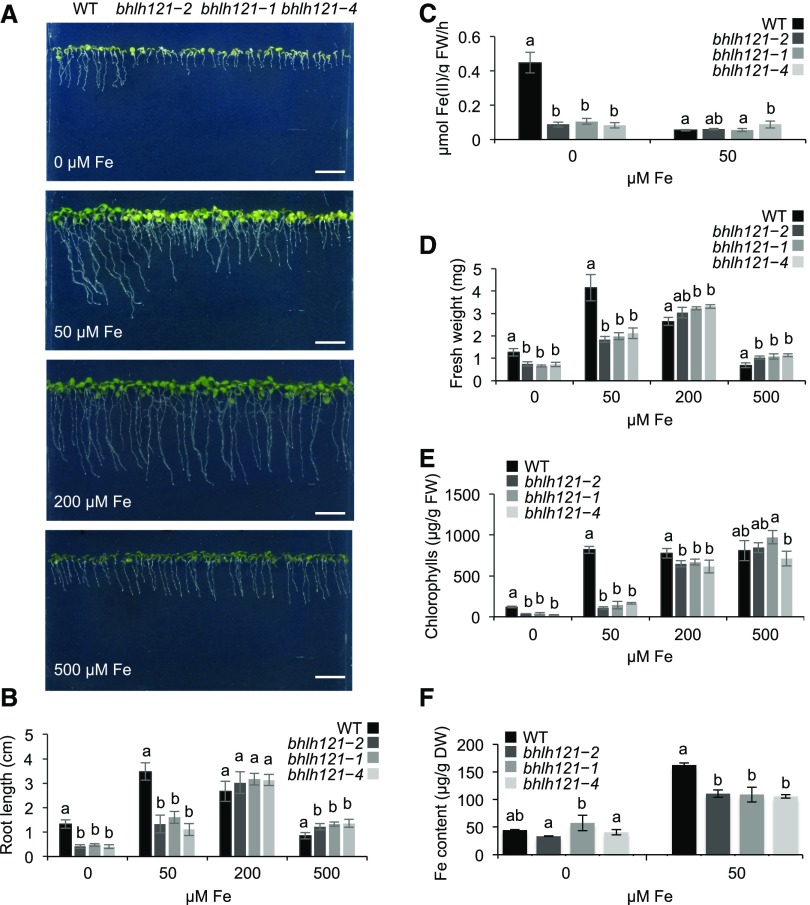Figure 2.
bhlh121 Loss-of-Function Mutants Have Decreased Tolerance to Fe Deficiency.
(A) Phenotypes of the Arabidopsis wild type (WT) and the three bhlh121 mutant alleles grown for 1 week on Fe-sufficient (50 μM Fe), Fe-deficient (0 μM Fe), or Fe-excess (200 and 500 μM Fe) medium. Bar = 1 cm.
(B) Root length of the wild type (WT) and the bhlh121 mutants grown on Fe-sufficient, Fe-deficient, and Fe-excess medium for 7 d.
(C) Ferric-chelate reductase activity of the wild type (WT) and the bhlh121 mutants grown for 1 week under control conditions and transferred to Fe-sufficient or Fe-deficient medium for 3 d.
(D) and (E) Fresh weight (FW; see [D]) and chlorophyll content (E) of the wild type (WT) and the bhlh121 mutants grown on Fe-sufficient, Fe-deficient, and Fe-excess medium for 7 d.
(F) Fe contents of the wild type (WT) and the bhlh121 mutants grown on Fe-sufficient or Fe-deficient medium for 7 d.
(B) to (F) Means within each condition with the same letter are not significantly different according to one-way ANOVA followed by post hoc Tukey test, P < 0.05 (n = 3 biological repeats from one representative experiment). Error bars show ±sd. A biological repeat comprised a pool of 12 seedlings in (B), 40 seedlings in (C), 5 seedlings in (D) and (E), and ∼80 to 100 seedlings in (F). Each experiment was repeated three times.

